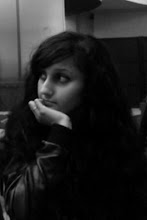Horror is a genre aimed to frighten an audience. Horror audiences enjoy this feeling and the rush of adrenaline they get; which thrills them. This makes them want to watch more, and they expect each film to be better/scarier. A lot of them involve: presenting people's hidden fears and nightmares (i.e. being buried alive), the 'unknown', a killer disease or virus, serial killers, evil spirits/satanism, ghosts, creatures (i.e. werewolves), vampires, cannibals, zombies, psycholligically demented individuals and much more. Most commonly - plenty of torture and gore!
Conventions include:
Mise-en-scene
- Isolated/domestic settings which are often at night time
- Dark atmosphere, which is created by expressionistic and shadowy lighting
Camerawork and editing
- Crosscutting for suspense sequences
- Faster cutting for violent action
- Point of view shots for those being watched
- Hand-held shots for chase scenes
Characters
- Hedonistic teenagers
- Innocent girls
- Victims become heroes
- Monsters
- Final girl
- Psychologically damaged adults
Narratives based on specific issues/themes emerging
- Good triumphing over evil
- Conflict played out as a battle between good and evil
- The supernatural haunting an individual
- Unfinished business with a villain coming back for revenge
- Confusion with identity
- Unsolved murders
- Unexplained events
Narrative structure
- Conforms to Todorov's equilibrium, disruption, restoration of equilibrium
- Propp's character theory
- Binary oppositions between good and evil, life and death, supernatural and natural - leading to resolution of those conflicts but often with a twist at the end suggesting all is not well
- Victims using their skills to solve the crime and reveal/overthrow the murderer
Icons
- Blood
- Gore
- Knives
- Shadows
- Darkness
- Masks
- Ghosts
- Deformities
Music and sound
- Heartbeats
- Atmospheric suspense music
- Psycho strings
- Loud bangs and crashes
- Screams
Subscribe to:
Post Comments (Atom)


No comments:
Post a Comment